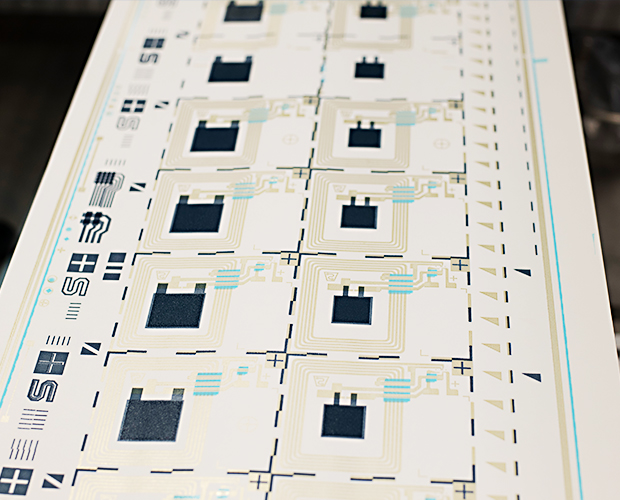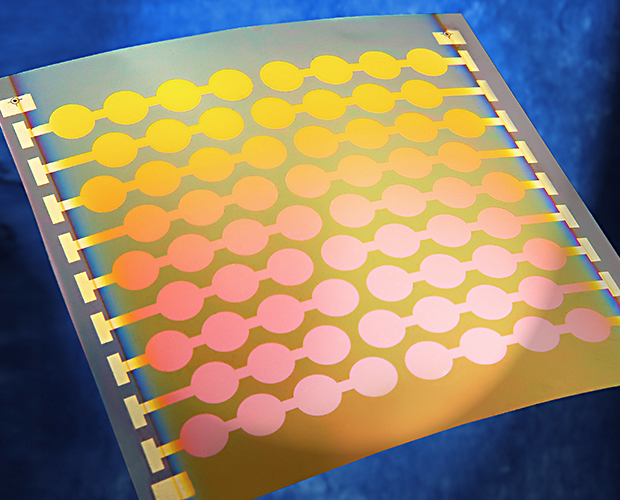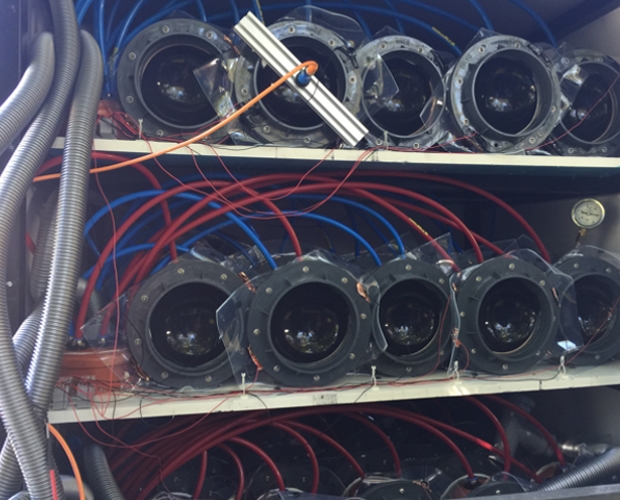Generators
Generators for converting mechanical strain into electrical energy can be realized using dielectric elastomer generators or piezoelectric foils.
Tabbed contents
Dielectric Elastomer Generators
Thin silicone films, provided on both sides with an elastic conductive layer and an insulating protective layer, form an expandable capacitor. When this film is stretched, its capacitance and thus the electrical energy content increases. If voltage is applied in the range of a few kV is applied, an electrical energy of 100 mJ can be converted from an approximately 20 cm² film with a surface enlargement of 100 %.
In regenerative water generators, the mechanical expansion of the silicone films clamped in a holder is caused by flowing water. If water flows through a narrowed pipe, the flow velocity at this point increases and a high dynamic pressure is created. This creates a suction, i. e. a negative air pressure, at a take-off pipe. Due to this Venturi effect, negative pressures in the range of 100 mbar can be achieved. Silicone films connected to this take-off tube are stretched with it.
The modular and mobile design with power classes around 100 W on small streams and rivers can be used at low flow velocities from 1 m/s and has no influence on living organisms or flow conditions. These mobile generators can also be used to power remote settlements in developing countries, charging stations for pedelecs or autonomous measuring stations.
>> Water generator of "DEGREEN Project".
Competences:
- Material and process know-how for the production of dielectric elastomer films with very high dielectric strength (70 kV/mm) and high mechanical cycle strength (at least 1 million cycles at 100 % elongation).
- Mechanical and hydraulic engineering competence for the development of adaptable flow converters
- Electronics expertise for the development of highly efficient high-voltage electronics with load monitoring for autonomous operation of a generator
- Mechanical, climatic and electrical test engineering to prove the reliability of mechatronic systems
Offer:
- Adaptation and use of water generators to different water conditions
- Transfer of the energy conversion principle of dielectric generators to different excitation principles (Energy Harvesting)
- Testing technology for mechatronic systems
Piezoelectric Energy Harvester
Based on piezoelectricity, energy harvesters can be used for decentral energy supply. CeSMA offers two approaches based on different material classes:
Piezoceramic thin films
These harvesters need only small volumes and can be processed on flexible stainless steel films. They address applications with high mechanical robustness and can operate in thermal conditions up to 160 °C.
Piezopolymers
These polymeric films can be used when the thermal budget during processing is low (< 100 °C). The longtime operation temperature is slightly above 80 °C. They can be applied on a variety of temperature sensitive substrates including plastic films or even paper. It is also a way to bypass the use of lead as needed for piezoceramic harvesters.



(50 x 50 mm²)
